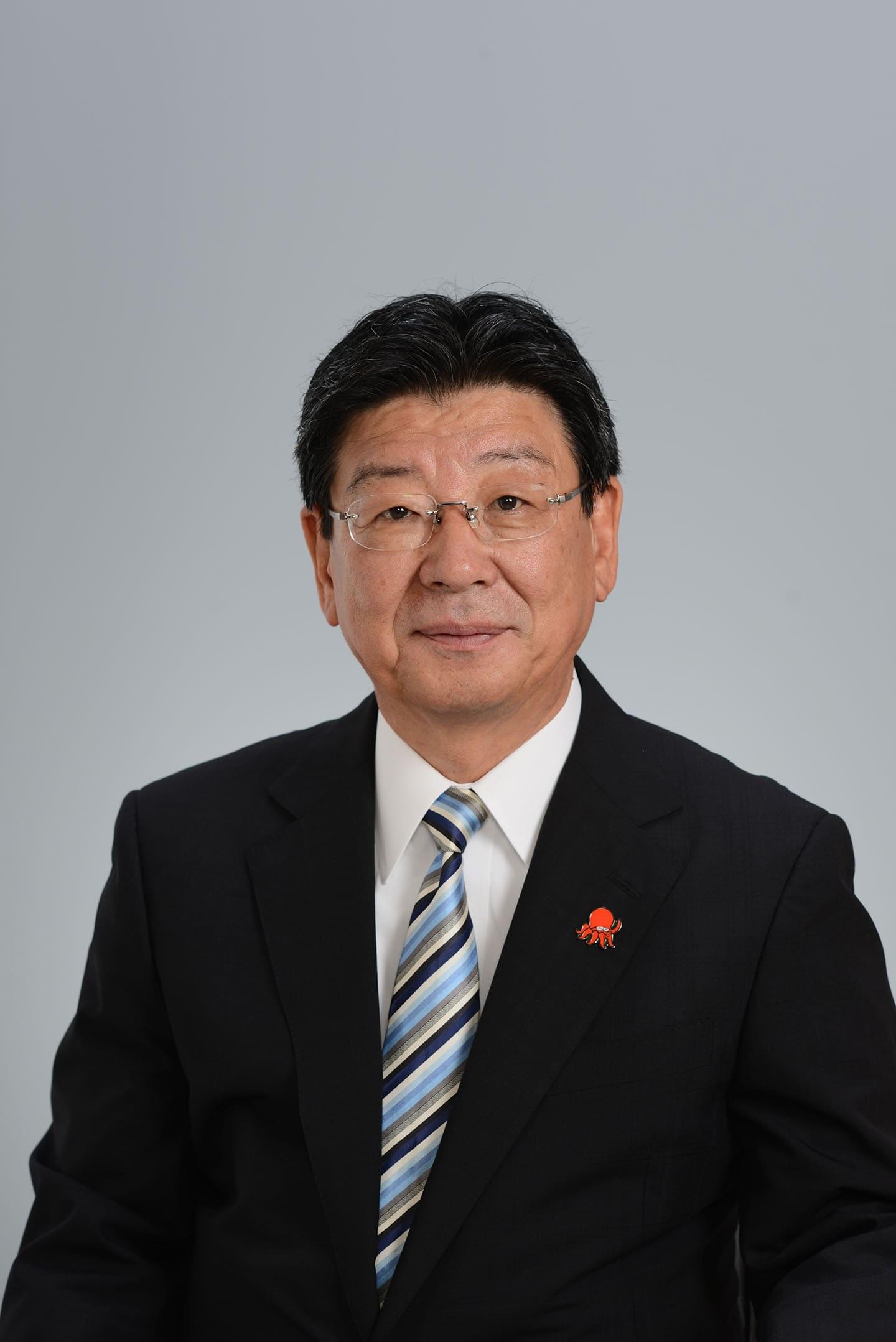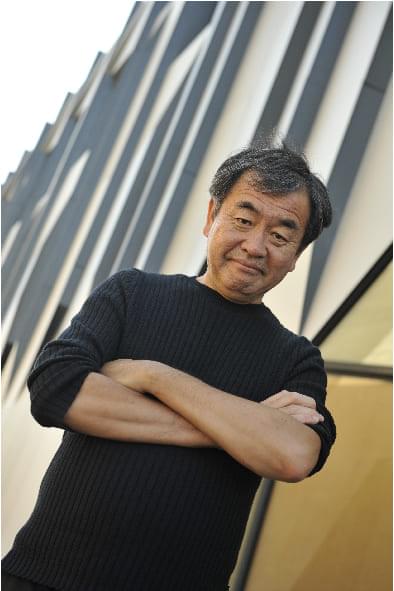About MINAMISANRIKU 311 Memorial
南三陸311メモリアルについて
Message from the Mayor

Mayor, Minamisanriku
Jin Sato
佐藤 仁
March 11, 2011.
On that day, we experienced unprecedented damage from a once-in-a-thousand-year scale tsunami.
From the rooftop of the Disaster Emergency Center, I saw the town devastated, without a trace of the way it was before.
The everyday activities of the locals and the townscape that was passed down for generations that we all worked for- were all gone. It was a scene of silence, engulfed in despair, fear, and sorrow.
After surviving this extreme situation and losing everything in our lives, we have worked relentlessly to rebuild our home. We are entirely committed to the single goal of restoring our hometown to the way it was, to pass it down to the next generation with bright hope for the future. The path to recovery was demanding and full of challenges, and from time to time, we were on the verge of losing hope. However, the support coming from all over Japan and around the world enabled us to pull together and keep going.
MINAMISANRIKU 311 Memorial is a facility that was developed as a place to reflect on disaster prevention by sharing firsthand experiences of local residents. It was created to pass down our recovery efforts for our hometown and express our gratitude for all of the support we received to future generations.
Every time we witness horrific natural disasters in Japan and around the world, we cannot help but feel that it is impossible for humans to overcome the power of nature. Yet, that is precisely why we would like people to think about disaster prevention on a daily basis as their own businesses, to prepare and find ways to save lives when the time comes.
It will be an honor if our experiences told in MINAMISANRIKU 311 Memorial contributed to saving lives around the world. Moreover, we hope that visitors to Minamisanriku will discover the preciousness of life, mentality to never give in no matter how big the hardship is, and joy of living together by supporting each other.
I hope every single person who visits this facility contemplates the reality that natural disasters bring and joins us in our effort to pass it down to future generations.
With condolence for those who were lost, and endless gratitude for those who have supported us.
October 1, 2022
Jin Sato, Mayor of Minamisanriku
Mission
-
LEARNING
The MINAMISANRIKU 311 Memorial is home to a small theater. There, you can watch the firsthand accounts of town residents, think about what you would have done in the same situations, and discuss your thoughts with the people around you. In that principal component of the MINAMISANRIKU 311 Memorial, you will be a part of collective learning about natural disasters from your own perspective. Learn more
ARCHIVES
The MINAMISANRIKU 311 Memorial continues to collect residents’ firsthand accounts, photographs, and videos of the disaster. In addition to preserving these memories, the Memorial creates new exhibits and learning programs with these materials. Learn more
FIELDWORK
The MINAMISANRIKU 311 Memorial has an area featuring artworks where visitors can gaze into the memories of the Great East Japan Earthquake with the eyes of their hearts. It is a place for quietly reflecting on the meaning of nature, humanity, and life. Additionally, the Memorial also offers visitors the option to join tours where they can visit areas near the museum that have preserved memories of the disaster, as well as diverse educational workshops. Learn more
About the Architecture: Kengo Kuma and Minamisanriku
I started to draw the grand design in 2013, 2 years after 3/11, and was involved in the reconstruction of Minamisanriku for about 10 years. The new manmade ground was cut off from the sea, which had been raised 10 meters, and a large sea wall was built atop it. I wanted to reconnect it to the sea and earth and recreate it as a warm, walkable town. So, the town was rebuilt with the sense of streets and trees (Minamisanriku cedar) as themes.
The MINAMISANRIKU 311 Memorial is the culmination of the town’s community development efforts. The Memorial stitches together one axis (the Sun Sun Shopping Village [2017]) that looks out to the sea with another (the Nakabashi Bridge [2020]) that reaches straight toward the sea. Thus, the sea, mountains, river, and town are connected as one “ring,” through which a state of resonance is created between the town and its people.
To bring multiple axes and streets together, the MINAMISANRIKU 311 Memorial was designed as a “hole” that attracts the flow of people. The louvers of Minamisanriku cedar are arranged radially from the center of the ""hole"" on the facade to further strengthen the attraction, connecting people to one another and to the earth.
Inside, the museum displays works that convey the memory of the disaster, such as Christian Boltanski’s posthumous work “Memorial,” and a group of works by young artists from Tokyo University of the Arts. The space is designed with the idea that the disaster is not something to be buried in the past but that it continues to be an issue to be faced today.
Photo (c) J.C. Carbonne
Project for Developing Healing Works
The interior and exterior of the museum are decorated with paintings and other works from projects by Tokyo University of the Arts. Junji Ito, Specially Appointed Professor of COI Site at Tokyo University of the Arts, was commissioned by Kengo Kuma & Associates to work with young artists to create artworks with the disaster area in mind.
Smart Vision for Community Building (formerly the Cultural Diplomacy and Art Business Group) of the COI Site at Tokyo University of the Arts has been engaged in a project to restore the landscape of the disaster-affected areas of Tohoku. Ten years have passed since the Great East Japan Earthquake, so in a situation where some distance from the disaster has emerged, we have worked to promote the passing down and recreation of those memories.
Junji Ito, Project CoordinatorJunji Ito Profile
Specially Appointed Professor at COI Site, Tokyo University of the Arts. Project Planner and Producer. Commissioner of the Japanese Pavilion at the 1995 Venice Biennale. Professor at the University of Toyama from 2005 to 2013. Chairperson of the Executive Committee of Kanayamachi Rakuichi from 2008 to 2012. Former Director of the Nagasaki Prefectural Art Museum. Governing Council Member of the Japan Cultural Institute in Paris. Honorary Director of the Toyama City Museum of Glass Art. Advisor at JEXT, Inc.■Three-Dimensional Works
-
Warmth (Exterior) /Aluminum, Wrap Paint
1. Artwork Concept
A large rabbit sofa one can sit on, touch, and enjoy.
Large ears look after the surroundings while the body is relaxed.
Sit and relive the warmth of that day.
2. Technical Approach
This work is based on hammering techniques (shaping with backing metal and hammer). Aluminum plates are cut into pieces, put together to form each part, and welded to make a unified artwork. Rather than being a work of “traditional craft” whose main purpose is appreciation, this work was produced under the theme of “practical object,” which is closer to the viewer and then was sublimated into an artwork.
This work takes durability and safety into consideration and represents the artistic traits of rabbit and wrap painting.Profile
1991: Born in Ehime Prefecture.
2018: Graduated Metal Casting Course at Tokyo University of the Arts.
2020: Obtained MA in Metal Casting from Tokyo University of the Arts.
Currently an educational and research assistant for Common Studio Hammering and Machinery Room at Tokyo University of the Arts.
■Mural
Re:Naître—Mountain, Village, Sea
Hoping that people will feel hope for the future from the natural beauty of Minamisanriku, 3 painters who graduated Tokyo University of the Arts created this work.
Before beginning to paint, they conducted research at Minamisanriku to experience its charms for themselves. They interviewed residents, surveyed nature, and incorporated as much of Minamisanriku’s resources as possible into their work. The result is a large mural, 20 meters wide and up to 6 meters high. The artists collaborated with Kengo Kuma & Associates and used 3D technology to create the works in accordance with the slanted wall space in which they were to be installed.-
"Mountain: A Time Like Sunlight through the Trees
(Mural: Center)" /Oil and AcrylicIn the sunlight through the trees, children are playing in nature. At the time of the earthquake, I was a junior high school student, and it was heartbreaking to hear the stories of children who were close to my age at the time. This work was painted with thoughts of the things that will continue into the future and those that will be left behind forever.
Profile
Born in Nagasaki. Graduated from Tokyo University of the Arts with a major in oil painting. After entering the university, he chose “wounds” as the theme of his work. -
Village: Breath of Spring (Mural: Right) /Oil and Acrylic
Wishing for the recovery of Minamisanriku, I painted flowers blooming in the gentle light of spring, including plum blossoms that bloomed in Minamisanriku just before the earthquake and announced the arrival of spring, camellia blossoms that did not wither despite the tsunami and became a symbol of Minamisanriku’s recovery…Minamisanriku is a beautiful “village” filled with numerous flowers. By depicting the kindness and warmth offered by nature, I hope to engage with the lives and landscapes that have been lost.
Profile
Born in Tokyo in 1989. Graduated from the Department of Fine Arts at Tokyo University of the Arts with a major in oil painting. Completed the graduate course in fine arts at Tokyo University of the Arts Graduate School (Oil painting, Hotaro Koyama Laboratory). Worked as a specially appointed assistant in the Cultural Diplomacy and Art Business Group, COI Site, Tokyo University of the Arts, and has been involved in numerous projects for the implementation of art in society as a social foundation. She is currently the curator at the Kamakura City Kawakita Film Museum and will relocate to California in the summer of 2022. -
Sea: Awakening Again (Mural: Left) /Oil and Acrylic
There are many ways to think about the soul, but in this painting, the image of the soul ascending to heaven and returning to the light before receiving a body is represented by a school of fish. At the bottom of the sea, children and other creatures are glowing and waiting to be born. The sea is the fundamental home for all beings in the cycle of life. I hope that the day will come when we will be reunited with those who were suddenly and sadly separated from us after the earthquake. In this painting, I have captured the journey of the soul as it continues to circulate in the same way that nature does.
Profile
Born in 1986 in Hiroshima. Graduated from the Department of Fine Arts at Tokyo University of the Arts with a major in oil painting. Studied at École nationale supérieure des Beaux-Arts in Paris, France. Completed postgraduate studies at Tokyo University of the Arts Graduate School. Full-time lecturer at the Kyoto University of the Arts. She creates paintings based on the theme of visualizing and replacing the images of places that are difficult to share with others, such as multidimensional worlds and senses.
